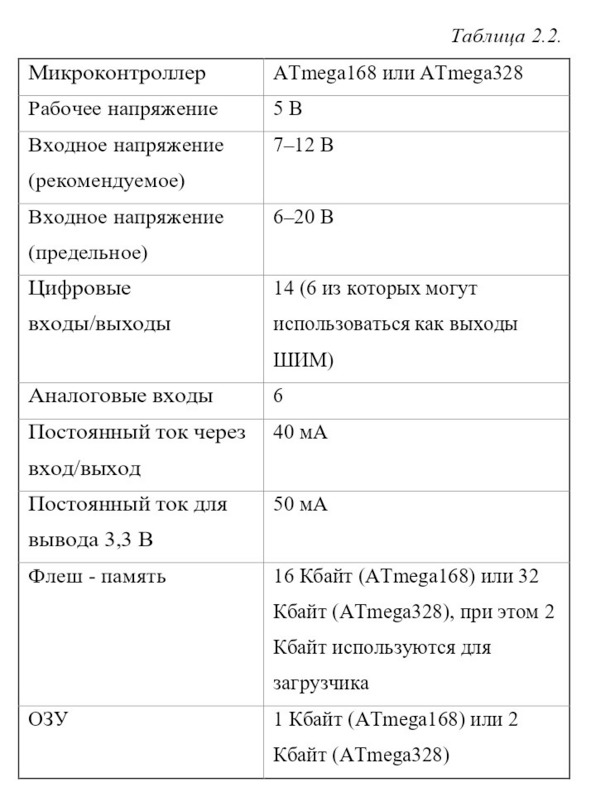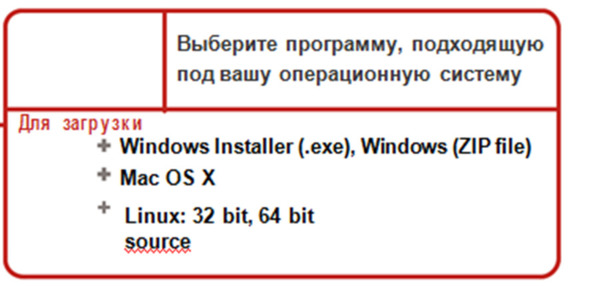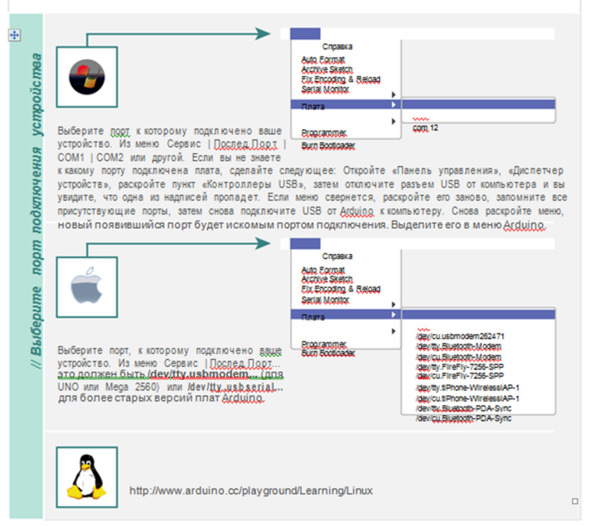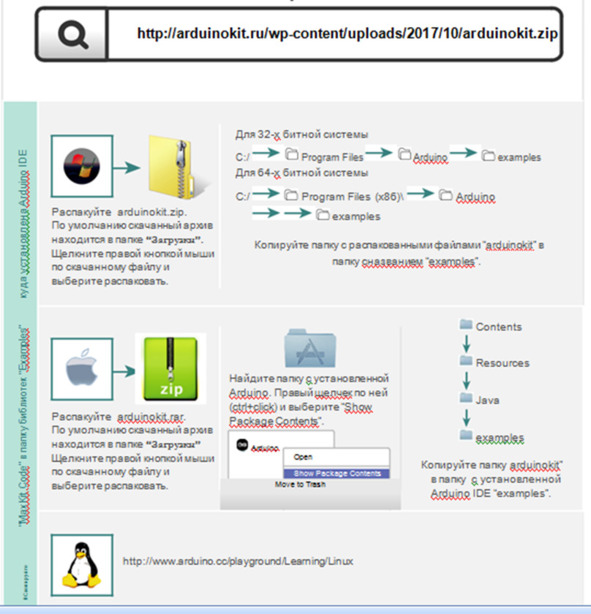
Полная версия
Arduino and electronic creativity. Study guide

Arduino and electronic creativity
Study guide
Boxodir Xoshimovich Karimov
Axliddin Mirzoxidovich Qo'chqorov
Editor Ibratjon Xatamovich Aliyev
Editor Obbozjon Xokimovich Qo'ldoshev
Cover design Ibratjon Xatamovich Aliyev
Cover design Boxodir Xoshimovich Karimov
Illustrator Ibratjon Xatamovich Aliyev
Illustrator Boxodir Xoshimovich Karimov
Illustrator Axliddin Mirzoxidovich Qo'chqorov
Reviewer, Doctor of Physical and Mathematical Sciences, Professor and Head of the Department of "Technological Education" of the Faculty of Physics and Technology of Fergana State University Salim Madraximovich Otajonov
Reviewer, Doctor of Physical and Mathematical Sciences, Professor of the Department of "Physics" of the Energy Faculty of the Fergana Polytechnic Institute No'monjon Akramovich Sultonov
Reviewer, Doctor of Technical Sciences, Professor of the Scientific Research Institute "Physics of Semiconductors and Microelectronics" at the National University of Uzbekistan Obbozjon Xokimovich Qo'ldoshev
Proofreader Ibratjon Xatamovich Aliyev
Translator Ibratjon Xatamovich Aliyev
© Boxodir Xoshimovich Karimov, 2023
© Axliddin Mirzoxidovich Qo'chqorov, 2023
ISBN 978-5-0059-5227-1
Created with Ridero smart publishing system
Preface
Arduino is an electronic designer and a convenient platform for the rapid development of electronic devices for students and professionals. The platform has become popular all over the world due to the convenience of the programming language, as well as open architecture and program code. It is programmed via the USB port.
Arduino blue-green light board. At its core, Arduino is a small personal computer that allows you to go beyond the virtual world into the physical world and interact with it. Arduino-based devices can receive information about the environment through various sensors, and can also control various actuators.
Arduino-based device designs can work independently or interact with computer software. Try to use our tips, and soon it will all make real sense.
Arduino UNO is a developer board, one of several (Mega, Nano, etc.), based on the ATmega328 microcontroller. It is popular mainly because of its extensive support network and versatility. The Arduino UNO has 14 digital I – O ports, six of which can output PWM. There are also 6 incoming analog ports. There is a 16 MHz generator, a USB port, a power connector, a reset button, and an ICSP connector.
Good luck with your independent project.
Chapter 1. INTRODUCTION TO ARDUINO
The first chapter discusses the appearance of the first microcontrollers, the advantage of Arduino, the history of the creation and development of the Arduino platform.
1.1. Arduino – what is it?
The appearance of the first microcontrollers marked the beginning of a new era in the development of microprocessor technology. The presence of most system devices in one case made the microcontroller similar to a regular computer. In the literature, they are called single-chip microcomputers. Accordingly, the desire to use microcontrollers as ordinary computers appeared almost with their appearance. But this desire was restrained by many factors. For example, to assemble a device on a microcontroller, you need to know the basics of circuit design, the device and operation of a particular processor, be able to program in assembly language and manufacture electronic equipment. Programmers, debuggers and other auxiliary devices will also be required. As a result, you cannot do without a huge amount of knowledge and expensive equipment. This situation did not allow many amateurs to use microcontrollers in their projects for a long time. Now, with the advent of devices that make it possible to work with microcontrollers without having a serious material base and knowledge of many subjects, everything has changed. An example of such a device is the Arduino project of Italian developers.
Arduino and its clones are kits consisting of a ready-made electronic unit and software. The electronic unit here is a printed circuit board with an installed microcontroller and a minimum of elements necessary for its operation. In fact, the Arduino electronic unit is an analog of the motherboard of a modern computer. It has connectors for connecting external devices, as well as a connector for communicating with a computer, through which the microcontroller is programmed. The features of Atmel’s ATmega microcontrollers used allow programming without the use of special programmers. All you need to create a new electronic device is an Arduino board, a communication cable and a computer. The second part of the Arduino project is software for creating control programs. It combines the simplest development environment and a programming language, which is a variant of the C/C++ language for microcontrollers. It has added elements that allow you to create programs without studying the hardware. So to work with Arduino, it is almost enough to know only the basics of programming in C / C++. Created for Arduino and many libraries containing code that works with various devices.
1.2. The advantage of Arduino!
The user of a modern computer does not think about the functioning of individual parts of the PC. He just runs the right programs and works with them. Similarly, Arduino allows the user to focus on the development of projects, rather than on studying the device and the principles of functioning of individual elements. There is no need to create complete boards and modules. The developer can use ready-made expansion boards or simply directly connect the necessary elements to the Arduino. All other efforts will be directed to the development and debugging of the control program in a high-level language. As a result, not only professionals got access to the development of microprocessor devices, but also just amateurs to do something with their own hands. The availability of ready-made modules and software libraries allows non-professionals in electronics to create ready-made working devices to solve their tasks. And the options for using Arduino are limited only by the capabilities of the microcontroller and the available version of the board, and, of course, by the imagination of the developer.
1.3. History of Arduino creation
In 2002, programmer Massimo Banzi was hired as an associate professor at the Interaction Design Institute of Ivrea (IDII) to promote new ways of developing interactive projects. However, a tiny budget and limited access time to the laboratory base reduced his efforts to almost nothing. In the projects, Banzi used the BASIC Stamp device developed by the California company Parallax. Stamp was a small printed circuit board with a power source, a microcontroller, memory and I/O ports placed on it for connection to various equipment. Programming of the microcontroller was carried out in the BASIC language. BASIC Stamp had two problems: a lack of computing power and a fairly high price – the board with the main components cost about $ 100. And the Banzi team decided to independently create a board that would meet all their needs. Banzi and his staff set themselves the goal of creating a device that is a simple, open and easily accessible development platform, with a price – no more than $ 30 – acceptable for students and youth pockets. They also wanted to highlight their device with something against the background of others. Therefore, in contrast to other manufacturers saving on the number of PCB pins, they decided to add as many as possible, and also made their board blue, unlike conventional green boards. The product that the team created consisted of cheap and affordable components – for example, it was based on the ATmega328 microcontroller. But the main task was to guarantee the operation of the device according to the plug-and-play principle, so that the user, taking the board out of the box and connecting it to the computer, could immediately get to work.
The first prototype of the board was made in 2005, it had a simple design and was not yet called Arduino. A little later, Massimo Banzi came up with the idea to call it so – after the name of a bar belonging to him, located in the city of Ivrea. The Arduino brand, without any advertising and attracting marketing funds, quickly gained high popularity on the Internet. Since the beginning of distribution, more than 250 thousand Arduino kits have been sold, and this is not taking into account the many clones. There are more than two hundred distributors of Arduino products in the world – from large firms such as SparkFun Electronics to small companies working for the local market. Today, the Arduino platform is represented not by one board, but by a whole family of them. In addition to the original project, called Arduino Uno, new models with more powerful means on the board are called Arduino Mega, compact models are Arduino Nano, boards in a waterproof case are LilyPad Arduino, and a new board with a 32—bit Cortex – M3 ARM processor is Arduino Due.
The Arduino project owes its success to the Processing language and the Wiring platform that existed before it. Arduino inherited one strong feature from these projects – a user-friendly development environment. Before the advent of Arduino, programming microcontrollers required complex and routine pre-training. And with Arduino, even those who have no experience with electronic devices can now join the world of electronics. Beginners no longer have to spend a lot of time studying related material – they can quickly develop a prototype that will be fully operational.
According to Massimo Banzi, fifty years ago, writing software required a team of people in white coats who knew everything about electronic lamps. Now, with the advent of Arduino, many people have the opportunity to create electronic devices on their own. According to one of the members of the Banzi team, telecommunications engineer David Quartills, the philosophy of Arduino is precisely that anyone who wants to understand electronics can immediately start studying it, instead of first learning algebra.
Chapter 2. OVERVIEW OF ARDUINO FAMILY CONTROLLERS
Chapter 2 provides an overview of Arduino family controllers, drawings and technical parameters.
The main versions of Arduino boards are represented by the following models:
· Due – board based on 32-bit ARM microprocessor Cortex-M3 ARM SAM3U4E;
· Leonardo – ATmega32u4 microcontroller board;
· Uno is the most popular version of the Arduino base platform;
· Duemilanove – ATmega168 or ATmega328 microcontroller board;
· Diecimila is a version of the basic Arduino USB platform;
· Nano is a compact platform used as a layout. Nano is connected to the computer using a USB Mini-B cable;
· Mega ADK – a version of the Mega 2560 board with support for the USB-host interface for communication with Android phones and other devices with USB interface;
· Mega2560 – a board based on the ATmega2560 microcontroller using the ATmega8U2 chip for serial connection via USB port;
· Mega – version of the Mega series based on the ATmega1280 microcontroller;
· Arduino BT – platform with Bluetooth module for wireless communication and programming;
· LilyPad – a platform designed for carrying, can be sewn into fabric;
· Fio platform is designed for wireless applications. Fio contains an XBee radio connector, a LiPo battery connector and a built-in charging circuit;
· Mini0 is the smallest Arduino platform;
· A pro platform designed for experienced users may be part of a larger project;
· Pro Mini – like the Pro platform, it is designed for experienced users who need a low price, smaller dimensions and additional functionality.
2.1. Arduino Pro Mini
Arduino Pro Mini (Fig. 2.1) is built on the ATmega168 microcontroller.

Figure 2.1. Arduino Pro Mini Board
The characteristics of the Arduino Pro Mini board are presented in Table 2.1.

Arduino Pro Mini can receive power: via an FTDI cable, or from a converter board, or from an adjustable 3.3V or 5V power supply (depending on the platform model) via the VCC pin, or from an unregulated source via the RAW pin.
Power terminals:
· RAW – for connection of unregulated voltage;
· VCC – for connection of regulated 3.3 V or 5 V;
· GND – ground terminals.
2.2. Arduino Nano
The Nano platform (Fig. 2.2), built on the ATmega328 microcontroller (Arduino Nano 3.0) or ATmega168 (Arduino Nano 2.x), is small in size and can be used in laboratory work.

Fig. 2.2. Arduino Nano Board
The Arduino Nano can be powered via a USB Mini-B connection, or from an unregulated 6—20 V (pin 30) or an adjustable 5V (pin 27) external power supply. The source with the highest voltage is automatically selected.
The characteristics of the Arduino Nano board are presented in Table 2.2.

2.3. Arduino Uno
The Arduino Uno controller (Fig. 2.3) is built on the ATmega328 microcontroller. Unlike all previous boards that used the FTDI USB microcontroller for USB communication, the new Arduino Uno uses the ATmega8U2 microcontroller.

Figure 2.3. Arduino Uno Board
The characteristics of the Arduino Uno board are presented in Table 2.3.

2.4. Arduino Mega2560
The Arduino Mega (Fig. 2.4) is built on the ATmega2560 microcontroller.

Рис. 2.4. Плата Arduino Mega2560
The characteristics of the Arduino Mega2560 board are presented in Table 2.4.

Chapter 3. DOWNLOADING THE ARDUINO PROGRAM AND DRIVER
3.1. Downloading the Arduino IDE program
Arduino is an electronic designer and a convenient platform for the rapid development of electronic devices for beginners and professionals. The platform has become popular all over the world due to the convenience of the programming language, as well as open architecture and program code. It is programmed via USB without the use of programmers.
The blue-green board is the Arduino. At its core, Arduino is a small personal computer that allows you to go beyond the virtual world into the physical world and interact with it. Arduino-based devices can receive information about the environment through various sensors, and can also control various actuators.
Arduino-based device designs can work independently or interact with computer software.
Consider the most popular versions of Arduino (Nano, UNO, Mega,) used in the work.
Arduino UNO is a developer board, one of several (Mega, Nano, etc.), based on the ATmega328 microcontroller. It is popular mainly because of its extensive support network and versatility.
The Arduino UNO has 14 digital I – O ports, six of which can output PWM. There are also 6 incoming analog ports. There is a 16 MHz generator, a USB port, a power connector, a reset button, and an ICSP connector.
In order to get started with Arduino, you need to go to the website arduino.cc and download the Arduino IDE program from the Download section ver 1.8.19, completely free.

Fig.3.1. Computer operating systems
First specify the type of operating system on your computer. Using any browser, enter the following in the address bar:
Connect the Arduino Uno board to the computer use the USB cable included in the kit, connect the Arduino board to one of the USB 2.0 connectors of your computer.

3.2. Installing drivers
Depending on which operating system is installed on your computer, you need to choose the way to install the driver.
Below are the links and installation methods for the Arduino Uno board.
*You should pay very careful attention to the selection and installation of drivers.
Installation for Windows
Follow the link below to access the installation instructions on a Windows computer.
http://arduino.cc/en/Guide/Windows
Installation for Macintosh OS X
There is no need to install additional drivers for Mac OS, but you can visit the «quick start» page.
http://arduino.cc/en/Guide/MacOSX
Follow the link below to access the installation instructions on a computer running the Linux operating system.
http://www.arduino.cc/playground/Learning/Linux
Arduino IDE Program Interface:

This is how the Arduino IDE programming environment running on your computer looks like. We are starting to get acquainted with its interface. Now we will not touch the code, but only tell you about the purpose of the function keys in the program menu.
The following shows the most important commands used in new projects, such as check, upload, new, open, save, serial monitor port, sketch name, code drop and message area. Sketches of new projects are checked if loaded correctly. After that, the scheme should work. If the sketch and the diagram are incorrect, then the malfunction is eliminated. After all, the scheme should work.

Fig.3.2. Arduino IDE programming environment
3.3. Graphical user interface and the most important commands

Figure 3.3. Graphical user interface

Figure 3.4. The three most important commands in the Arduino IDE menu
3.4.Board and Port selection

Figure 3.4. Board and port selection
3.5.Download Arduino sketches

Chapter 4. ARDUINO UNO BOARD, AND ACCESSORIES
4.1. Electrical circuit
An electrical circuit is an unbroken path along which an electric current can flow from the starting point to the end point, for example, from plus to minus. Electrical circuits can contain resistors, diodes, transistors, motors, and more. The scheme can contain a huge number of such elements.

Fig.4.1. Electrical circuit
Circuits are generally divided into three categories: analog circuits, digital circuits, and mixed-signal circuits. In this guide, you will explore all three sets of circuits.
Конец ознакомительного фрагмента.
Текст предоставлен ООО «ЛитРес».
Прочитайте эту книгу целиком, купив полную легальную версию на ЛитРес.
Безопасно оплатить книгу можно банковской картой Visa, MasterCard, Maestro, со счета мобильного телефона, с платежного терминала, в салоне МТС или Связной, через PayPal, WebMoney, Яндекс.Деньги, QIWI Кошелек, бонусными картами или другим удобным Вам способом.

